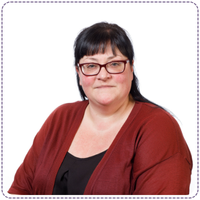Safeguarding
KCSIE 2025 – What’s Changed?
ACCESS OUR £1.99 Guide to the KCSIE UPDATES 2025
The changes in the draft version of Keeping Children Safe in Education 2025 (KCSIE 2025) are incredibly few this year, which is good news as it’s so close to the end of term. However, that does leave a bit of a gap in your general staff training, as there aren’t so many new things to share with staff. To support you, I’ve created a handy table which details all of the changes (there really aren’t many), and for each, I’ve come up with some questions for you to ask yourself and your colleagues. Reflecting on current practice is just as important as swapping to new practice. Do you have consistency? Are things truly embedded in your culture so that they are business as usual? I hope you find this a useful approach: SFE Education Adviser and Interim School Support Lead, Jo Perrin, discusses the updates detailed in the recently released KCSIE 2025 draft and points out key questions for you to ask yourself and your colleagues…
 KCSIE 2025 : A Guide to the Key Safeguarding Updates
KCSIE 2025 : A Guide to the Key Safeguarding Updates
Our advisers have created a comprehensive resource that gives DSLs and school leaders everything they need to know about the latest statutory changes in Keeping Children Safe in Education 2025.
Covering online safety, attendance, kinship care, safer recruitment, inclusive language and more, it ensures you are fully up to date and inspection-ready.
This resource is an indispensable reference guide to support training, policy updates and safeguarding practice in every school.
ACCESS OUR £1.99 Guide to the KCSIE UPDATES 2025NEED TAILORED SAFEGUARDING SUPPORT AT YOUR SCHOOL?
Our expert advisers can provide in-school visits to deliver sessions on any specific safeguarding issues that are relevant to your setting. We also offer consultancy and a detailed safeguarding audit. We will work with you to understand your exact requirements.
Get in touch with us today if you’d like to discuss bespoke Safeguarding training for your school.
find out more About the Author
About the Author
Jo Perrin - Interim School Support Lead, Adviser, Services For Education

Jo Perrin is a seasoned Education Adviser with a strong background in safeguarding. She has held key roles as a Designated Safeguarding Lead and pastoral lead in the education sector. Facilitating training to enhance the knowledge and skills of professionals working directly with children and young people is her passion.
With a wealth of experience in teaching PSHE and expertise in childhood trauma from her time as a foster carer, Jo is dedicated to supporting organisations that work with children and vulnerable adults on safeguarding issues. She is actively involved in professional safeguarding groups in the West Midlands and is currently collaborating on a research project with colleagues from the University of Birmingham and the NHS focusing on FGM awareness within communities. Jo’s has worked as a West Midlands' Adviser for national PSHE resources, presented at the Sex Education Forum National Members' Event and authored an advertorial for PSM magazine and an article for SEND magazine.
Jo's expertise extends to training on topics such as Safer Recruitment and Mental Health at Work. She is also a facilitator for the nationally recognised NPQSL qualification, supporting senior leaders in education. Her contributions to publications and development of resources for RSE provision have been well-received by schools nationally and internationally.
With her extensive experience and dedication to professional development, Jo Perrin is a highly respected figure in the field of education. Her guidance on safeguarding, mental health awareness, personal development, and relationships education is highly valued within the industry.






